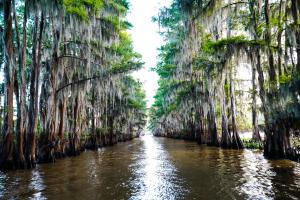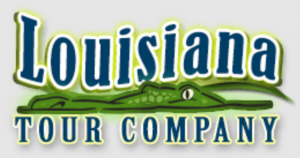Wildlife Encounters on Louisiana Swamp Tours: What Animals May Appear
From reptiles and birds to mammals and amphibians, the wildlife of the swamps adapts to the warm, humid climate and brackish water conditions unique to the Gulf Coast. Milton Walker Jr., owner of Louisiana Tour Company in New Orleans, emphasized that swamp tours are as much about the animals as they are about the environment. “The Louisiana wetlands are alive with activity. Depending on the season, water levels, and time of day, different animals make themselves visible to passing tour boats,” said Walker.
Among the most iconic creatures frequently spotted during a swamp tour is the American alligator. These reptiles are native to Louisiana and are often seen basking on logs or drifting just beneath the surface with only eyes and snout exposed. Alligators tend to be more active during warmer months and can be observed in both fresh and slightly brackish waters.
Wading birds are another common sight. Great egrets, blue herons, roseate spoonbills, and white ibises patrol the shallow waters in search of fish, frogs, and insects. Their distinctive plumage and slow, deliberate movements make them easy to identify from a distance. Some species nest in the cypress trees along the banks, creating picturesque scenes during spring and early summer.
Aquatic mammals such as nutria and river otters also call the swamps home. Nutria, large semi-aquatic rodents with orange teeth, are often seen near the edges of the water chewing on vegetation. Though considered an invasive species, they are now widespread throughout the Louisiana wetlands. River otters, while more elusive, occasionally appear in quieter areas of the swamp, especially during the cooler months.
Turtles and snakes are part of the regular ecosystem as well. Red-eared sliders and softshell turtles sun themselves on logs and rocks. Non-venomous water snakes may be seen swimming across bayous or curled up in shaded tree roots. Though most swamp snakes are harmless, their camouflage makes them easy to overlook.
For those who visit during the spring or early fall, migratory birds often join the mix. Ospreys, hawks, and even bald eagles occasionally pass through or nest in the higher reaches of the swamp forest. These birds add to the variety of species that appear seasonally and depend on the Mississippi Flyway for migration routes.
Insect life also thrives in the swamp, though it may not always be as welcomed by tour participants. Dragonflies, butterflies, and an array of beetles dart among the plants and water lilies. While mosquitoes are naturally present, most tour operators recommend appropriate attire and repellents to reduce discomfort during warmer months.
Frogs and toads make themselves heard more often than seen. Their croaks, chirps, and calls often form a background soundtrack to the boat ride. Bullfrogs, tree frogs, and green frogs can sometimes be spotted along the shoreline or clinging to reeds.
The occasional deer or wild boar may appear along the tree lines, particularly in the early morning or just before dusk. These larger mammals tend to avoid human activity but sometimes cross visible paths when moving between feeding grounds. Their tracks are often found along muddy shorelines, even when the animals themselves remain hidden.
Louisiana Tour Company operates guided swamp tours departing from the Greater New Orleans area. Tour guides highlight the ecological and cultural significance of the wetlands while pointing out wildlife as it appears naturally along the route. Tours navigate narrow bayous, open marshes, and cypress swamps, offering a full view of the area’s biodiversity.
Swamp tours vary throughout the year based on water levels, seasonal migrations, and weather patterns. During rainy seasons, wildlife may spread deeper into the marsh. During dry periods, animals may be more concentrated near main waterways. Each tour offers a different mix of sightings based on these natural rhythms.
The Louisiana wetlands serve as a critical habitat for species survival, flood control, and the cultural identity of the region. Exploring this environment by boat allows guests to witness firsthand the complex relationship between wildlife, vegetation, and the waterways that connect them.
Wildlife sightings are never guaranteed, but patience and observation often reveal the wide variety of species that call the Louisiana swamps home. From sunbathing reptiles to fast-flying birds and curious mammals, the swamp remains a living, changing environment rich in biodiversity.
Morgan Thomas
Rhino Digital, LLC
+1 504-875-5036
email us here
Visit us on social media:
Facebook
Legal Disclaimer:
EIN Presswire provides this news content "as is" without warranty of any kind. We do not accept any responsibility or liability for the accuracy, content, images, videos, licenses, completeness, legality, or reliability of the information contained in this article. If you have any complaints or copyright issues related to this article, kindly contact the author above.
Car Warranties for Used Cars Gain Importance as Affordable Vehicle Market Expands, Says Premier Auto Protect
LightBulbSurplus.com Expands LED Driver Selection with Over 212 Models Now Available
Medical Supplierz Partners with Leading Healthcare Brands to Expand Product Listings
Więcej ważnych informacji
 Jedynka Newserii
Jedynka Newserii

 Jedynka Newserii
Jedynka Newserii

Handel

Polskie MŚP otrzymają większe wsparcie w ekspansji międzynarodowej. To cel nowej inicjatywy sześciu instytucji
Firmy z sektora małych i średnich przedsiębiorstw otrzymają kompleksowe wsparcie na potrzeby zwiększania konkurencyjności na arenie międzynarodowej. Taki jest cel wspólnej inicjatywy instytucji zrzeszonych w Grupie PFR pod szyldem Team Poland. Obejmuje ona zarówno wsparcie kapitałowe, w postaci gwarancji, pożyczek czy ubezpieczenia, jak i doradztwo oraz wsparcie promocyjne i informacyjne, dzięki czemu mikro-, małym i średnim firmom łatwiej będzie podjąć decyzję o ekspansji zagranicznej. Pierwszy projekt dotyczy wsparcia dla firm zainteresowanych uczestnictwem w odbudowie Ukrainy.
Bankowość
RPP zgodna co do potrzeby obniżania stóp procentowych. Trwają dyskusje dotyczące tempa tych decyzji

W lipcu Rada Polityki Pieniężnej po raz drugi w tym roku obniżyła stopy procentowe, określając swój ruch mianem dostosowania. W kolejnych miesiącach można oczekiwać kolejnych obniżek, ale ich tempo i termin będą zależeć od efektów dotychczasowych decyzji i wzrostu płac. Docelowo główna stopa procentowa ma wynosić 3,5 proc. Te okoliczności sprzyjają kredytobiorcom.
Handel
Umowa z krajami Mercosur coraz bliżej. W. Buda: Polska nie wykorzystała swojej prezydencji do jej zablokowania

– Polska podczas prezydencji w Radzie UE nie wykorzystała szansy na obronę swoich interesów w sprawie umowy z krajami Mercosur – ocenia europoseł PiS Waldemar Buda. W jego ocenie polski rząd, mimo sprzeciwu wobec zapisów umowy, nie zbudował w UE sojuszy niezbędnych do jej odrzucenia. Porozumienie o wolnym handlu spotyka się przede wszystkim z protestami europejskich rolników, którzy obawiają się zalania wspólnego rynku tańszą żywnością z krajów Ameryki Południowej. Według europosła wszystko może się rozegrać w najbliższych tygodniach.
Partner serwisu
Szkolenia

Akademia Newserii
Akademia Newserii to projekt, w ramach którego najlepsi polscy dziennikarze biznesowi, giełdowi oraz lifestylowi, a także szkoleniowcy z wieloletnim doświadczeniem dzielą się swoją wiedzą nt. pracy z mediami.





![Część środków z Planu Społeczno-Klimatycznego trafi na walkę z ubóstwem transportowym. Organizacje branżowe apelują o zmianę priorytetowych projektów [DEPESZA]](https://www.newseria.pl/files/1097841585/rower3,w_85,_small.jpg)




.gif)

 |
| |
| |
|